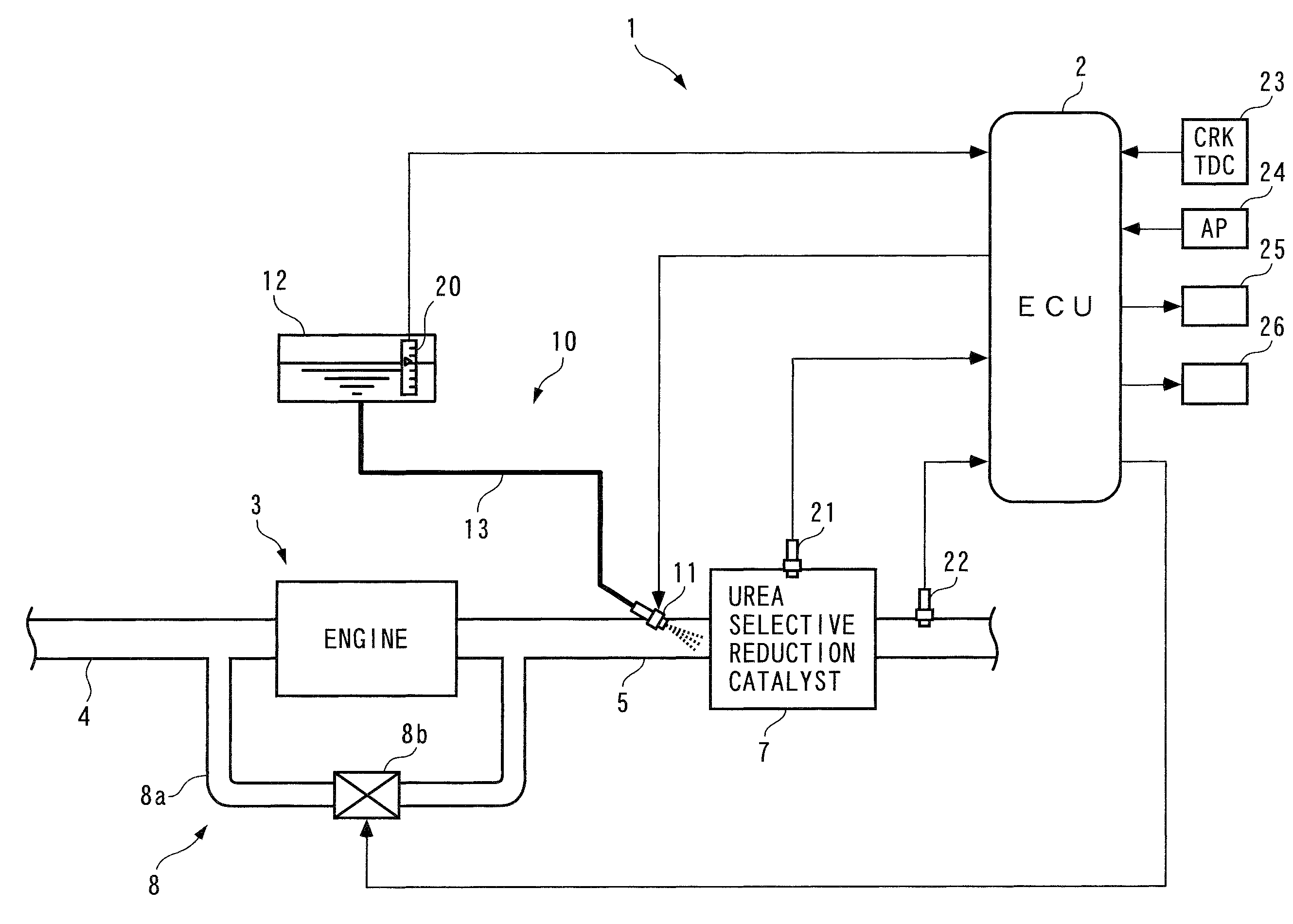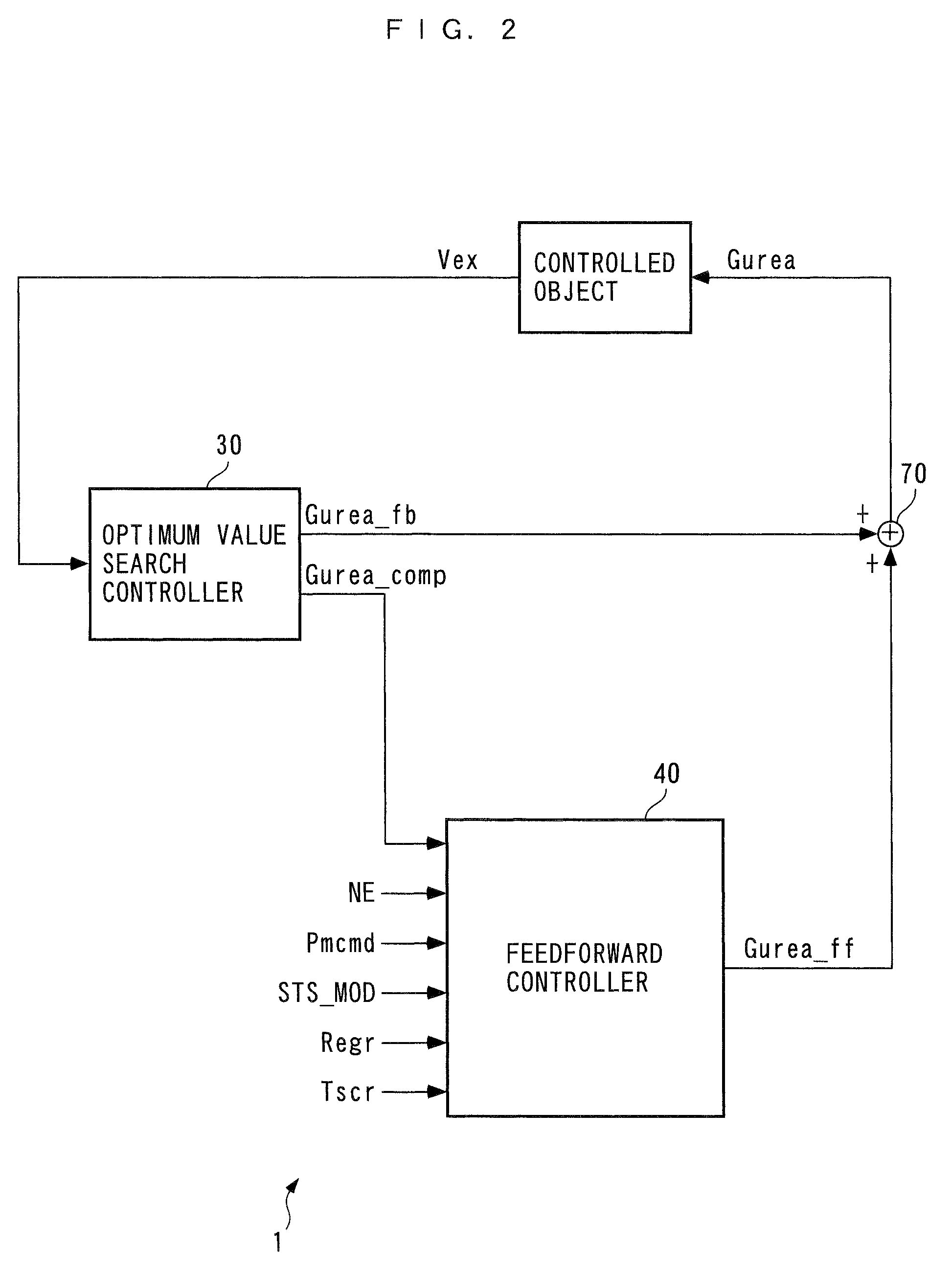Exhaust emission control device for internal combustion engine
an emission control device and internal combustion engine technology, applied in the field of exhaust emission control devices for internal combustion engines, can solve the problems of lowering the estimation accuracy of the inability to properly control the amount of injected reducing agents, so as to improve the calculation accuracy of the supply amount, improve the nox purification ratio, and reduce the effect of exhaust emissions
- Summary
- Abstract
- Description
- Claims
- Application Information
AI Technical Summary
Benefits of technology
Problems solved by technology
Method used
Image
Examples
Embodiment Construction
[0066]Hereafter, an exhaust emission control device for an internal combustion engine, according to an embodiment of the present invention will be described with reference to the drawings. FIG. 1 schematically shows the arrangement of the exhaust emission control device 1 according to the present embodiment, and the internal combustion engine (hereinafter referred to as “the engine”) 3 to which is applied the exhaust emission control device. The engine 3 is (a gasoline engine or a diesel engine) of a lean-burn operation type, and is installed on a vehicle, not shown.
[0067]As shown in FIG. 1, the exhaust emission control device 1 is comprised of an ECU 2, a urea selective reduction catalyst 7 disposed in an exhaust passage 5 of the engine 3, a urea injection device 10 for injecting urea water into the exhaust passage 5 on the upstream side of the urea selective reduction catalyst 7, and so forth.
[0068]The urea injection device 10 (reducing agent supply device) includes a urea injecti...
PUM
 Login to View More
Login to View More Abstract
Description
Claims
Application Information
 Login to View More
Login to View More - R&D
- Intellectual Property
- Life Sciences
- Materials
- Tech Scout
- Unparalleled Data Quality
- Higher Quality Content
- 60% Fewer Hallucinations
Browse by: Latest US Patents, China's latest patents, Technical Efficacy Thesaurus, Application Domain, Technology Topic, Popular Technical Reports.
© 2025 PatSnap. All rights reserved.Legal|Privacy policy|Modern Slavery Act Transparency Statement|Sitemap|About US| Contact US: help@patsnap.com



